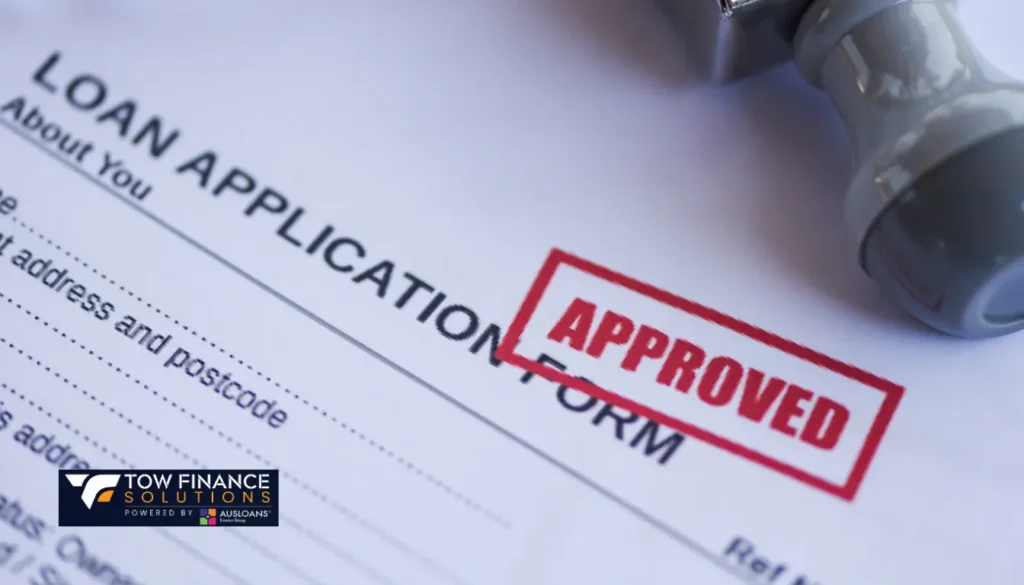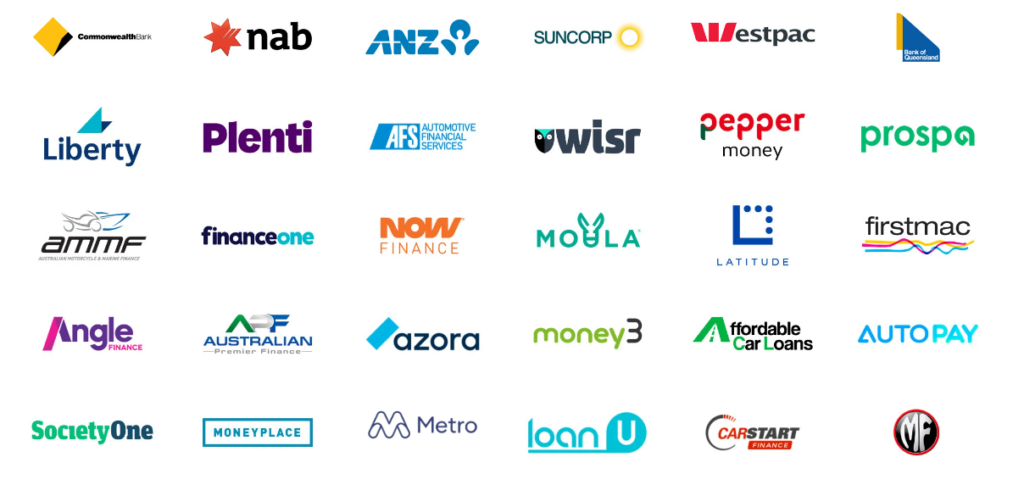The Complete Guide to Secured vs. Unsecured Loans
Sept 3, 2025
Choosing the right loan type can make the difference between securing favorable terms and facing unnecessary financial stress. Whether you’re financing a new vehicle, expanding your business, or funding a major purchase, understanding the fundamental differences between secured and unsecured loans is crucial for making informed decisions. At Tow Finance Solutions, we work with over 40 lenders to help customers access both secured and unsecured financing options, often with approvals in as little as one hour. This comprehensive guide will equip you with the knowledge to choose the loan structure that best aligns with your financial goals and circumstances.
Overview
This article provides a detailed comparison of secured and unsecured loans, covering everything from basic definitions to practical application strategies. You’ll learn about the unique advantages and considerations of each loan type, discover which option suits different financial scenarios, and understand how to improve your approval chances. We’ll also explore specific applications for vehicle finance, business growth, and leisure purchases, helping you navigate the lending landscape with confidence.
Find The Best Deal

With over 10 years of industry experience we are a leading independent broker with a diverse panel of 40 + lenders to find you the best solution, tailored to you and your goals!
Key Takeaways
• Secured loans use collateral to reduce lender risk, typically offering lower interest rates and higher loan amounts
• Unsecured loans don’t require collateral but generally come with higher interest rates and stricter approval criteria
• Your credit score, income stability, and loan purpose significantly influence which option works best for your situation
• Vehicle and asset financing typically use secured loan structures, while personal loans are often unsecured
• Working with experienced brokers can help you access the most suitable loan type from multiple lenders
• Both loan types can be approved quickly when you have the right documentation and lender partnership
What Are Secured Loans?
Definition and Core Characteristics
Secured loans are financial products where borrowers pledge an asset as collateral to guarantee repayment. This collateral provides security for the lender, reducing their risk exposure and typically resulting in more favorable terms for qualified borrowers. The asset securing the loan can be the item being purchased (like a car or boat) or a separate valuable asset you already own.
When you take out a secured loan, the lender holds a legal claim against the collateral until the debt is fully repaid. This arrangement creates a win-win scenario: borrowers gain access to larger loan amounts at competitive rates, while lenders have recourse if payments aren’t maintained. The collateral essentially acts as insurance for the lending institution.
Common examples of secured loans include car finance, home mortgages, boat loans, and equipment financing. In many cases, the asset being financed serves as its own collateral, making the process straightforward and efficient.
Types of Collateral Accepted
Lenders accept various forms of collateral depending on the loan purpose and their specific policies. Real estate remains the most common and valuable form of collateral due to its stability and appreciating nature. Vehicles, including cars, trucks, motorcycles, and recreational vehicles, are frequently used for leisure finance and transportation loans.
Business equipment, machinery, and inventory can secure business finance arrangements, allowing companies to expand operations while leveraging existing assets. Other acceptable collateral may include investment accounts, term deposits, boats, caravans, and even valuable collections, depending on the lender’s assessment criteria.
The key factor in collateral acceptance is the asset’s ability to retain value and be readily sold if necessary. Lenders typically require professional valuations for high-value items and may set loan-to-value ratios to protect their investment.
Advantages of Secured Loans
Secured loans offer several compelling benefits that make them attractive for many borrowers. Lower interest rates represent the most significant advantage, as the collateral reduces lender risk and allows them to pass savings on to customers. These rate reductions can result in substantial savings over the loan term, particularly for larger amounts.
Higher borrowing limits are another key benefit, with secured loans often allowing access to significantly more funding than unsecured alternatives. This increased capacity makes secured loans ideal for major purchases like vehicles, equipment, or business expansion projects.
Longer repayment terms provide additional flexibility, spreading payments over extended periods to improve cash flow management. Many secured loans also feature more lenient approval criteria, making them accessible to borrowers with less-than-perfect credit scores.
Key Secured Loan Benefits:
• Competitive interest rates due to reduced lender risk
• Access to larger loan amounts for major purchases
• Extended repayment terms for better cash flow management
• More flexible approval criteria compared to unsecured options
• Potential tax advantages for business and investment purposes
• Faster approval processes when collateral is clearly established
Disadvantages and Risks
While secured loans offer numerous advantages, they also carry specific risks that borrowers must carefully consider. The most significant concern is the potential loss of collateral if you’re unable to maintain loan payments. Unlike unsecured loans, where consequences are primarily financial, secured loan defaults can result in losing valuable assets.
This risk is particularly relevant during economic downturns or personal financial hardships when maintaining payments becomes challenging. Additionally, the value of collateral can fluctuate, potentially creating situations where the loan balance exceeds the asset’s worth.
Secured loans may also involve additional costs such as valuation fees, insurance requirements, and legal documentation expenses. The application process can be more complex, requiring asset verification and potentially longer approval timelines for certain collateral types.
What Are Unsecured Loans?
Definition and Structure
Unsecured loans are financial products that don’t require collateral to guarantee repayment. Instead, lenders base their approval decisions on factors such as creditworthiness, income stability, employment history, and debt-to-income ratios. These loans rely entirely on the borrower’s promise to repay and their demonstrated financial responsibility.
The absence of collateral means lenders assume greater risk with unsecured lending, which typically translates to higher interest rates and more stringent approval criteria. However, this structure also provides borrowers with the flexibility to access funds without pledging valuable assets as security.
Personal loans, credit cards, and some business lines of credit represent common examples of unsecured financing. These products serve various purposes, from debt consolidation and home improvements to emergency expenses and business working capital needs.
Common Types of Unsecured Loans
Personal loans constitute the largest category of unsecured lending, offering fixed amounts with predetermined repayment terms. These loans serve multiple purposes, including debt consolidation, medical expenses, education costs, and planned purchases where collateral isn’t practical or desired.
Credit cards provide revolving unsecured credit, allowing borrowers to access funds up to predetermined limits and repay balances according to their financial capacity. Business credit lines and term loans without collateral help companies manage cash flow and fund operations without pledging specific assets.
Student loans, though often government-backed, typically function as unsecured debt from the borrower’s perspective. Payday loans and cash advances, while not recommended due to high costs, also fall into the unsecured category.
Benefits of Unsecured Loans
Unsecured loans provide several advantages that make them appealing for specific financial situations. The primary benefit is the absence of collateral risk – borrowers can’t lose physical assets if they encounter repayment difficulties, though credit and financial consequences remain significant.
Faster approval processes often characterize unsecured loans, particularly for borrowers with strong credit profiles. Without asset valuations and collateral verification, lenders can focus on credit and income assessment, potentially streamlining decision-making.
Flexibility in fund usage represents another key advantage, as borrowers aren’t restricted by collateral-related limitations. This freedom allows for diverse applications, from consolidating debt to funding unexpected expenses or opportunities.
Unsecured Loan Advantages: • No risk of losing physical assets as collateral • Faster application and approval processes • Complete flexibility in how funds are used • No asset valuation or inspection requirements • Suitable for borrowers who lack acceptable collateral • Privacy regarding asset ownership and values
Limitations and Higher Costs
The primary drawback of unsecured loans is their higher cost structure, reflecting the increased risk lenders assume. Interest rates typically exceed those of comparable secured loans by several percentage points, resulting in higher overall borrowing costs.
Lower maximum loan amounts often limit unsecured lending options, particularly for major purchases or business investments. Lenders naturally restrict exposure when collateral isn’t available to offset potential losses.
Stricter approval criteria can make unsecured loans challenging to obtain for borrowers with limited credit history, lower incomes, or existing debt obligations. The approval process heavily emphasizes credit scores and demonstrated financial stability.
Key Differences Between Secured and Unsecured Loans

Interest Rates and Costs
The most apparent difference between secured and unsecured loans lies in their cost structures. Secured loans consistently offer lower interest rates due to the collateral reducing lender risk. This rate differential can range from 2-10 percentage points depending on the loan type, borrower profile, and market conditions.
Beyond base interest rates, secured loans often feature lower fees and more competitive terms overall. Unsecured loans frequently include higher origination fees, stricter penalty structures, and additional charges that compound their cost disadvantage.
The impact of these rate differences compounds over time, particularly for longer-term loans. A 3% rate difference on a $50,000 five-year loan could result in thousands of dollars in additional interest costs for the unsecured option.
Loan Amounts and Terms
Secured loans typically offer significantly higher maximum borrowing limits, often reaching into hundreds of thousands of dollars for qualified applicants. This capacity makes them ideal for major purchases like vehicles, equipment, or real estate investments.
Repayment terms for secured loans are generally more flexible, with options extending up to 7-10 years or more depending on the collateral and purpose. These extended terms reduce monthly payment obligations and improve cash flow management.
Unsecured loans usually cap at lower amounts, commonly ranging from $5,000 to $100,000, with shorter repayment periods of 2-7 years. These limitations reflect lenders’ risk management strategies when collateral isn’t available.
Approval Requirements and Process
Credit score requirements often differ significantly between loan types, with secured loans typically accepting lower scores due to collateral protection. While unsecured loans may require credit scores of 650-700 or higher, secured options might approve borrowers with scores in the 550-600 range.
Income verification remains important for both loan types, but secured loans may accept lower debt-to-income ratios and alternative income documentation. The presence of collateral provides additional repayment assurance that can offset other risk factors.
Documentation requirements vary considerably, with secured loans requiring asset valuations, insurance verification, and collateral registration, while unsecured loans focus primarily on income, employment, and credit verification.
Comparison Summary:
• Interest Rates: Secured loans typically 2-10% lower than unsecured options
• Loan Amounts: Secured loans often 2-5x higher maximum limits
• Terms: Secured loans offer longer repayment periods (up to 10+ years)
• Credit Requirements: Secured loans more flexible with lower credit scores
• Approval Speed: Varies by lender, but both can be approved quickly with proper documentation
• Risk Profile: Secured loans carry asset loss risk; unsecured loans primarily affect credit
Which Loan Type Is Right for You?
Assessing Your Financial Situation
Determining the most suitable loan type requires honest evaluation of your financial circumstances, goals, and risk tolerance. Start by examining your credit score and history, as this significantly influences both availability and terms for each loan type. Borrowers with excellent credit (750+ scores) may find competitive rates for unsecured loans, while those with lower scores often benefit more from secured options.
Your income stability and debt-to-income ratio play crucial roles in loan type selection. Secured loans may accommodate higher debt ratios due to collateral protection, making them suitable for borrowers with existing obligations. Consider your monthly cash flow and determine whether you prefer lower payments over longer terms (typically secured) or faster payoff schedules (often unsecured).
Asset ownership significantly influences this decision. If you own valuable assets suitable for collateral and are comfortable using them as security, secured loans become viable options. However, if you prefer keeping assets unencumbered or lack suitable collateral, unsecured financing may be necessary despite higher costs.
Loan Purpose and Amount Considerations
The intended use of loan funds often determines the most appropriate structure. Vehicle purchases, equipment acquisitions, and real estate investments typically benefit from secured financing, as the purchased asset can serve as collateral while providing competitive terms for larger amounts.
For smaller personal expenses, debt consolidation, or situations where you need funding flexibility, unsecured loans might prove more suitable despite higher costs. Consider whether the loan purpose generates income or appreciates in value, as this can justify the asset risk associated with secured financing.
Business owners should evaluate whether equipment or vehicle purchases warrant secured financing, particularly when building business credit or maintaining personal asset separation. Business finance often benefits from secured structures for larger capital investments.
Risk Tolerance and Asset Protection
Your comfort level with asset risk represents a fundamental consideration in loan selection. Some borrowers prefer the peace of mind that comes with unsecured debt, accepting higher costs to avoid potential asset loss. Others view the collateral requirement as manageable risk given the significant cost savings and increased borrowing capacity.
Consider your asset portfolio and whether pledging specific items as collateral would create financial hardship if loss occurred. Diversified asset owners may be more comfortable with secured lending, while individuals with limited assets might prefer unsecured options to protect what they have.
Emergency fund availability can influence risk tolerance, as adequate reserves provide payment security that reduces default probability regardless of loan structure.
Decision Framework:
• Choose Secured Loans When: You own suitable collateral, need larger amounts, want lower rates, have moderate credit scores, or are making asset-based purchases
• Choose Unsecured Loans When: You lack acceptable collateral, need smaller amounts, have excellent credit, prefer asset protection, or require maximum flexibility
Secured vs. Unsecured Loans for Different Purposes
Vehicle and Transportation Financing
Car finance represents one of the most common applications for secured lending, with the vehicle itself serving as collateral. This arrangement provides several advantages including competitive rates, higher loan-to-value ratios, and extended repayment terms that make monthly payments more manageable.
New vehicle loans often feature the most attractive secured loan terms, with rates sometimes approaching home mortgage levels due to the asset’s predictable depreciation and strong resale market. Used vehicle financing remains competitive, though rates may increase slightly to account for higher depreciation and condition variables.
Motorcycle, boat, and recreational vehicle financing follows similar secured structures, leveraging the purchased asset as collateral. These specialized leisure finance options often provide terms of 5-7 years or more, making higher-end purchases accessible to qualified buyers.
Business vehicle financing can utilize either secured or unsecured structures depending on the company’s credit profile and asset strategy. Many businesses prefer secured vehicle loans to preserve unsecured credit capacity for operational needs.
Business and Commercial Applications
Business finance frequently employs secured structures, particularly for equipment purchases, real estate acquisitions, and major capital investments. Equipment financing allows businesses to purchase necessary machinery, technology, or vehicles while using the purchased items as collateral, often with competitive terms and tax advantages.
Working capital loans may use unsecured structures when businesses need operational flexibility without pledging specific assets. However, secured lines of credit backed by inventory, receivables, or equipment can provide higher limits and better terms for qualified companies.
Real estate investment and development projects typically require secured financing, with the property serving as collateral for construction loans, acquisition financing, or refinancing arrangements. These loans often provide the highest borrowing capacity available to business borrowers.
Startup businesses with limited operating history may find secured loans more accessible when personal or business assets are available as collateral, while established companies with strong cash flow might prefer unsecured options to maintain asset flexibility.
Personal and Lifestyle Financing
Home improvement projects can utilize either loan structure depending on the scope and borrower preferences. Secured options might include home equity loans or lines of credit, while unsecured personal loans work well for smaller projects where homeowners prefer not to encumber their property.
Debt consolidation often benefits from unsecured personal loans when borrowers want to combine multiple obligations without pledging assets. However, secured consolidation loans can provide lower rates and higher amounts when substantial debt needs addressing.
Education and training expenses typically use unsecured financing unless borrowers own suitable collateral and prefer the cost savings of secured terms. Emergency expenses almost always require unsecured solutions due to time constraints and the urgent nature of the need.
Wedding, vacation, and other lifestyle expenses generally work best with unsecured financing, particularly when amounts are modest and borrowers prefer maintaining asset flexibility for future opportunities.
How to Improve Your Approval Chances

Building and Maintaining Credit
Credit score optimization remains crucial for both secured and unsecured loan approval, though the importance varies by loan type. For unsecured loans, credit scores often determine approval and significantly influence terms, making score improvement efforts particularly valuable.
Start by obtaining current credit reports from all major bureaus and addressing any errors or outdated information. Pay down existing credit balances to improve utilization ratios, ideally keeping credit card balances below 30% of available limits, with under 10% being optimal.
Maintain consistent payment history across all obligations, as this represents the most significant factor in credit scoring models. Set up automatic payments for at least minimum amounts to avoid missed payments, and consider paying balances in full monthly when possible.
Avoid opening new credit accounts unnecessarily during the loan application process, as hard inquiries can temporarily reduce scores and multiple new accounts may signal financial stress to lenders.
Credit Improvement Strategies: • Check credit reports quarterly and dispute any errors immediately • Pay down credit card balances to improve utilization ratios • Make all payments on time, setting up automatic payments if necessary • Keep older credit accounts open to maintain credit history length • Consider becoming an authorized user on family members’ accounts with good payment history • Avoid closing credit cards unless annual fees are prohibitive
Documentation and Preparation
Proper documentation significantly impacts approval speed and success rates for both loan types. Gather recent pay stubs, tax returns, bank statements, and employment verification letters before beginning applications. Business applicants should prepare financial statements, tax returns, and business registration documents.
For secured loans, obtain recent asset valuations, insurance information, and clear title documentation. Professional appraisals may be required for high-value items, so factor these costs and timeframes into your planning.
Organize documents systematically and ensure all information is current and consistent across different sources. Discrepancies between documents can raise red flags and slow the approval process.
Consider working with experienced brokers who understand lender requirements and can guide document preparation for optimal results. At Tow Finance Solutions, our team helps clients organize applications for maximum approval potential across our network of 40+ lenders.
Working with Finance Brokers
Professional finance brokers provide significant advantages in loan selection and approval, particularly when navigating the differences between secured and unsecured options. Brokers maintain relationships with multiple lenders, understanding each institution’s specific criteria and preferences for different loan types and borrower profiles.
This lender knowledge allows brokers to match borrowers with the most suitable financing sources, potentially improving approval odds and terms. Rather than applying directly with individual lenders and risking multiple credit inquiries, brokers can pre-screen options and submit applications strategically.
Experienced brokers also provide valuable guidance on loan structure selection, helping borrowers understand the implications of secured versus unsecured choices for their specific situations. They can explain terms, highlight potential issues, and negotiate with lenders on behalf of clients.
The application support provided by quality brokers extends beyond simple submission, including document review, term explanation, and ongoing communication throughout the approval process. This support proves particularly valuable for first-time borrowers or those with unique circumstances.
Common Mistakes to Avoid
Secured Loan Pitfalls
One of the most dangerous mistakes with secured loans involves pledging assets you cannot afford to lose. Some borrowers use primary residences, essential vehicles, or critical business equipment as collateral without fully considering the consequences of potential default. Always ensure you have alternative arrangements if you lose pledged assets.
Overestimating asset values represents another common error, particularly with vehicles or equipment that depreciate rapidly. Don’t assume your collateral will maintain its current value throughout the loan term, and avoid borrowing amounts that could exceed the asset’s future worth.
Failing to maintain adequate insurance on pledged assets can violate loan agreements and create additional financial exposure. Ensure you understand insurance requirements and budget for appropriate coverage throughout the loan term.
Some borrowers also make the mistake of pledging appreciating assets like real estate for depreciating purchases, potentially losing significant equity growth opportunities over time.
Unsecured Loan Mistakes
The most frequent unsecured loan mistake involves borrowing beyond your repayment capacity, particularly given the higher interest rates and shorter terms typical of these products. Calculate total loan costs including interest and fees before committing to ensure affordability.
Another common error is applying for multiple unsecured loans simultaneously, which can severely impact credit scores through multiple hard inquiries and suggest financial distress to lenders. Space applications strategically and focus on the most suitable options first.
Some borrowers also fail to compare offers adequately, accepting the first approval without shopping for better terms. Even small rate differences can result in substantial savings over the loan term, making comparison shopping valuable.
Using unsecured loans for investments or business purposes without considering the tax implications can result in missed deductions or unfavorable tax treatment compared to secured business financing options.
General Application Errors
Providing inconsistent information across application documents creates red flags for lenders and can result in immediate rejection. Ensure all income figures, employment details, and personal information match exactly across all submitted materials.
Failing to read and understand loan terms before signing can lead to unexpected obligations, fees, or restrictions that impact your financial flexibility. Take time to review all documentation and ask questions about unclear provisions.
Many applicants also underestimate the importance of timing in loan applications, applying during periods of job changes, major purchases, or other financial transitions that might negatively impact approval odds.
Common Mistakes Summary:
• Secured Loans: Pledging essential assets, overestimating collateral values, inadequate insurance, poor asset selection
• Unsecured Loans: Borrowing beyond capacity, multiple simultaneous applications, insufficient comparison shopping, ignoring tax implications
• General Errors: Inconsistent information, inadequate term review, poor application timing, insufficient preparation
Future Considerations and Trends
Technology and Digital Lending
The lending landscape continues evolving rapidly, with technology transforming both secured and unsecured loan processes. Automated valuation models increasingly supplement traditional appraisals for collateral assessment, potentially speeding secured loan approvals while maintaining accuracy.
Digital income verification and bank account analysis enable faster unsecured loan decisions, with some lenders providing instant approvals for qualified applicants. These technological advances benefit both loan types but particularly impact unsecured lending where traditional verification processes created longer approval timelines.
Artificial intelligence and machine learning algorithms increasingly influence lending decisions, analyzing alternative data sources to assess creditworthiness beyond traditional metrics. This evolution may particularly benefit borrowers with limited credit history who previously struggled with unsecured loan approval.
Regulatory Changes and Market Evolution
Regulatory developments continue shaping the lending industry, with increased focus on consumer protection and fair lending practices. These changes generally benefit borrowers through improved transparency and standardized disclosure requirements across loan types.
Open banking initiatives may eventually provide lenders with more comprehensive financial data, potentially improving approval processes and terms for both secured and unsecured options. However, privacy considerations and data security remain important concerns as these systems develop.
Environmental and social governance (ESG) considerations increasingly influence lending decisions, particularly for business financing and asset purchases. This trend may create new opportunities for secured loans supporting sustainable purchases or business practices.
Planning for Economic Changes
Economic cycles significantly impact both secured and unsecured loan availability and terms. During economic downturns, lenders often tighten unsecured loan criteria while maintaining secured loan programs due to collateral protection.
Interest rate fluctuations affect both loan types, though secured loans typically maintain their rate advantage over unsecured options regardless of broader rate movements. Consider rate outlook and loan term implications when choosing between fixed and variable rate options.
Inflation and asset price changes can impact secured loan dynamics, potentially improving loan-to-value ratios for appreciating assets while creating challenges for depreciating collateral. Monitor these trends when planning longer-term secured financing arrangements.
Frequently Asked Questions

Q: Can I switch from an unsecured to a secured loan with my current lender? A: Some lenders offer loan conversion options, but this typically involves applying for a new secured loan and using proceeds to pay off the unsecured debt. The process depends on your lender’s policies and your current loan terms.
Q: What happens if my collateral loses value after getting a secured loan? A: Moderate depreciation is expected and usually doesn’t affect your loan terms. However, significant value loss might require additional collateral or payment adjustments, depending on your loan agreement and lender policies.
Q: Are there tax advantages to choosing secured loans over unsecured loans? A: Tax treatment depends on the loan purpose rather than structure. Business asset purchases may qualify for deductions regardless of loan type, while personal loans generally don’t provide tax benefits for either structure.
Q: How quickly can I get approved for secured versus unsecured loans? A: Both can be approved quickly with proper preparation. At Tow Finance Solutions, we often achieve approvals in as little as one hour for both loan types when documentation is complete and lenders are pre-selected.
Q: Can I use multiple assets as collateral for one secured loan? A: Yes, many lenders accept multiple assets as collateral, which can increase borrowing capacity and potentially improve terms. However, this also increases your risk exposure if repayment difficulties arise.
Q: What credit score do I need for unsecured loans versus secured loans? A: Unsecured loans typically require scores of 650-700+, while secured loans may approve scores as low as 550-600, though rates improve significantly with higher scores for both loan types.
Q: Is it better to pay off secured or unsecured loans first? A: Generally, focus on higher-interest debt first, which typically means unsecured loans. However, consider the risk of losing collateral and your overall financial strategy when making this decision.
Q: Can I refinance from a secured loan to an unsecured loan? A: This is possible if you qualify for unsecured financing sufficient to pay off the secured loan. However, you’ll likely face higher interest rates and potentially shorter terms with the unsecured replacement.
Q: Do secured loans always require formal appraisals for collateral? A: Not always. Vehicle loans often use automated valuation systems, while other assets may require professional appraisals depending on value and lender requirements. Your broker can clarify specific requirements for your situation.
Q: What happens to my collateral if I pay off a secured loan early? A: The lender releases their security interest in your collateral, and you regain full ownership rights. Some loans include early payment penalties, so review your terms before making additional payments.
Sources
• Australian Securities and Investments Commission (ASIC) – Consumer Credit Guide
• Reserve Bank of Australia – Interest Rate Statistics
• Australian Prudential Regulation Authority (APRA) – Lending Standards
• Australian Financial Complaints Authority (AFCA) – Consumer Resources
• National Consumer Credit Protection Act 2009
• Australian Competition and Consumer Commission (ACCC) – Finance Industry Guidelines
Ready to Find Your Perfect Loan Solution?
Understanding the differences between secured and unsecured loans is just the first step in your financing journey. At Tow Finance Solutions, our experienced team works with over 40 lenders to find the perfect loan structure for your specific needs, whether you’re seeking secured financing for a new vehicle or unsecured funding for personal goals. With our streamlined process and personalized service, you could have loan approval in as little as one hour.
Apply Now or Contact Us today to explore your secured and unsecured loan options with Australia’s trusted finance specialists.

